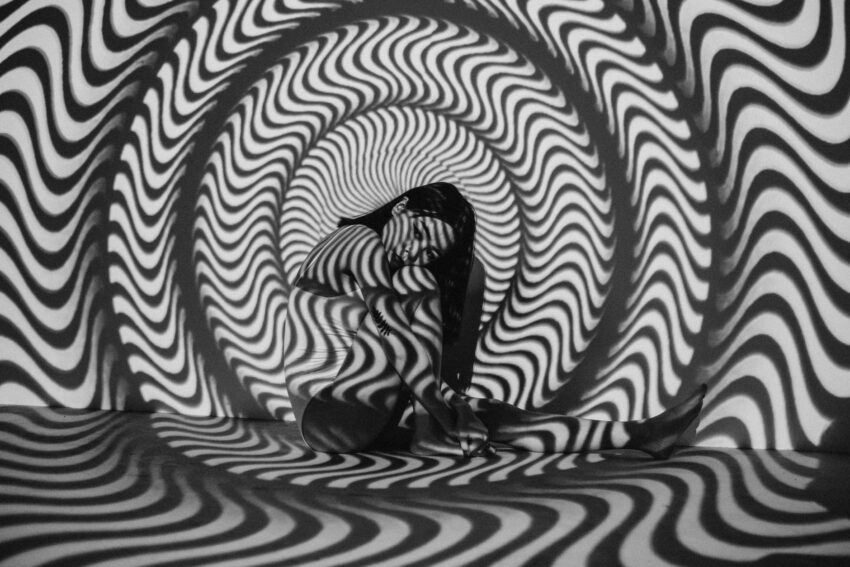The Psychedelic Revolution of the 1960s gave birth to a uniquely vibrant and mind-bending form of art. Psychedelic art, an integral part of the counterculture movement, has had a significant impact on culture and society across various aspects, including aesthetics, spirituality, and cultural iconography. This article delves into how psychedelic art has shaped and continues to shape our world in fascinating ways.
Originating from the Greek words “psyche” (mind/soul) and “delos” (manifest), psychedelic art encompasses a wide range of artistic styles and mediums, from traditional paintings to digital creations. It is often characterized by its hallucinogenic and distorted imagery, vivid colors, otherworldly landscapes, and surreal shapes. Inspired by mind-altering substances such as LSD and psilocybin mushrooms, psychedelic art aims to translate the transcendent and ineffable experiences of expanded consciousness into tangible forms.
As an integral part of the counterculture movement, psychedelic art played a significant role in expressing and promoting the ideals and values of the time. The 1960s were a period of upheaval, rebellion, and liberation, and psychedelic art served as a powerful visual language to communicate these messages. Artists such as Robert Crumb, Peter Max, and Victor Moscoso tapped into the psychedelic mindspace to create iconic works that not only captured the essence of the era but also influenced the broader culture.
One of the most significant expressions of psychedelic art during the counterculture movement was its impact on poster art, particularly the promotion of rock concerts, such as those held at San Francisco’s Avalon Ballroom and Fillmore Auditorium. Bands like The Grateful Dead, The Jimi Hendrix Experience, and Jefferson Airplane all had their concerts immortalized through intricate, mind-bending designs created by artists like Wes Wilson, Stanley Mouse, and Rick Griffin. These posters became an essential part of the broader visual culture and helped popularize the aesthetics of psychedelic design.
Besides poster art, psychedelic art has a long-standing relationship with music and album covers. Iconic albums like The Beatles’ “Sgt. Pepper’s Lonely Hearts Club Band”, Cream’s “Disraeli Gears”, and Pink Floyd’s “Dark Side of the Moon” feature vivid and imaginative artwork that not only adds to the music’s sensory appeal but also invites the listener on a visual journey. Psychedelic album covers, with their intricate and swirling designs, have come to define an entire generation.
Fashion, too, has been significantly influenced by psychedelic aesthetics. From couture to street fashion, vibrant colors, hypnotic patterns, and unconventional silhouettes can be traced back to the psychedelic movement. Designers like Emilio Pucci, Yves Saint Laurent, and Betsey Johnson embraced these kaleidoscopic motifs and incorporated them into their collections, significantly shaping the fashion landscape of the time and beyond.
One can argue that visionary art, a more recent art movement, has evolved as an extension of the psychedelic art legacy. Visionary art incorporates spiritual symbolism, mystical themes, and cosmic consciousness into its visual language, bridging the gap between the psychedelic realm and spiritual exploration. Artists like Alex Grey, Amanda Sage, and Android Jones create mesmerizing works that stimulate a profound sense of wonder and introspection.
The impact of psychedelic art on our cultural iconography cannot be understated. It has influenced not just artists, musicians, and fashion designers but has also shaped the visual lexicon of advertising, film, and graphic design. Its aesthetics can be seen in popular media like Yellow Submarine, Fear and Loathing in Las Vegas, and Austin Powers, keeping the psychedelic spirit alive even half a century after its inception.
In conclusion, the influence of psychedelic art is deeply pervasive and enduring. From the counterculture movement’s fiery beginnings to contemporary art movements like visionary art, psychedelic aesthetics continue to pervade our culture and society. From poster art and album covers to fashion and spiritual symbolism, the kaleidoscopic world of psychedelic art remains a potent and captivating force, inviting us to explore the boundless landscapes of the collective imagination.
